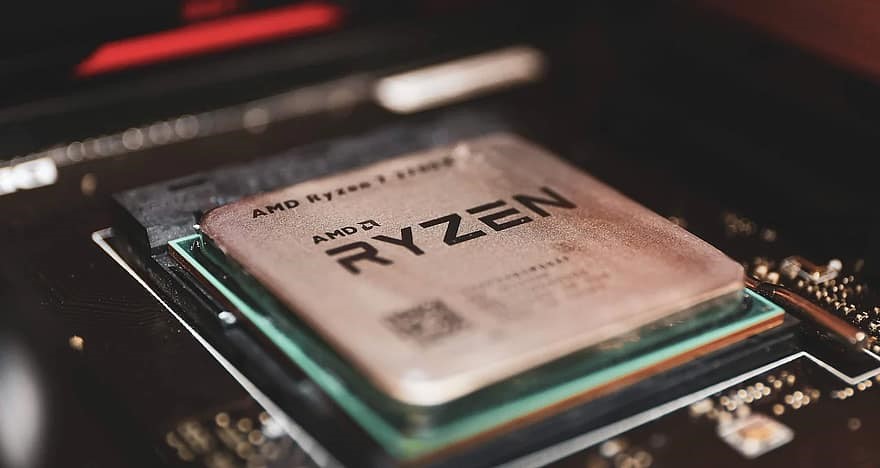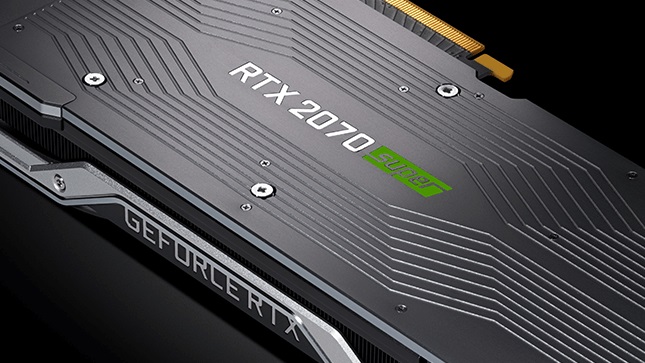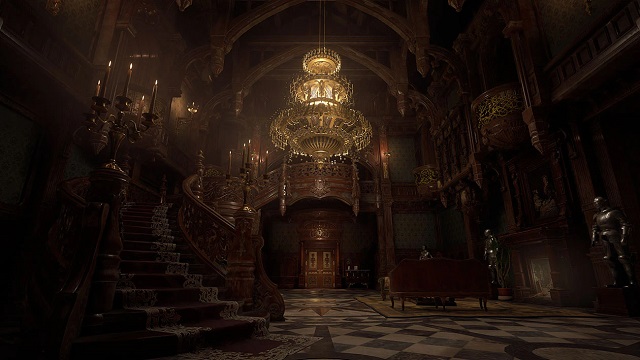Resident Evil Village is one of the biggest selling AAA games of 2021, with millions of gamers scaring themselves senseless while trying to survive the various horrors of the game’s European setting.
Alongside the creeping tension and excellent gameplay, Resident Evil Village looks gorgeous. It has fantastically spooky modern lighting, including ray tracing, and some of the most detailed gore yet seen in games.
The game uses the latest version of the RE engine. This is an enhanced version of the one used for the game’s prequel, Resident Evil 7: Biohazard, as well as Monster Hunter Rise, and the upcoming Pragmata.
While this engine helps the developers make high-quality assets for the fantastical visuals seen in Resident Evil Village, it’s also extremely inclusive when it comes to the demands it puts on your PC.
You don’t need a monstrously powerful gaming machine to enjoy this game at high detail settings either. Although if you want to run it at higher resolutions, a decent GPU is still good to have.
So, if you’re interested in taking a run at Lady Dimitrescu and her contemporaries, here’s what you need to get Resident Evil Village running at its best.
What CPU Do You Need for Resident Evil Village?

Processors aren’t as important for gaming as they once were, making it possible to play all sorts of modern games on relatively modest CPUs. That said, if you want to play at higher frame rates or pair it with a powerful graphics card, a decent CPU is a must.
Minimum CPU Requirements
At a minimum, Capcom recommends at least an AMD Ryzen 3 1200, or Intel Core i5 7500 CPU.
Neither of these chips are particularly powerful as they only feature four cores apiece. Since they’re both a few years old too, any entry-level gaming PC should come equipped with more than enough processing power to get Resident Evil Village up and running.
And when paired with the right graphics card (more on that below) any modern quad-core CPU will be more than enough to play this game at 1080p, 60 FPS, with the “Prioritize Performance” pre-set enabled.
To target the same frame rates and resolution, but with a higher level of in-game detail, you’ll not only need a more powerful graphics card, but a more powerful CPU too.

Recommended CPU Requirements
Capcom’s recommended processors are the Intel Core i7 8700, or the AMD Ryzen 5 3600.
Both chips have six cores and support up to 12 threads each, delivering much-improved general performance over the quad cores in the minimum specs. They also run at higher clock speeds and feature greater instructions per clock, helping to deliver much better in-game performance too.
If you want to play at higher resolutions than 1080p, a more powerful CPU isn’t strictly necessary – your graphics card will do most of the heavy lifting there. But, enabling much higher frame rates, and playing at greater detail settings may require more.
The game scales well up to eight cores, so if you’re looking to play on a new gaming PC, a system based on an AMD RX 5800X, or Intel Core i7 11700K will give you the best performance at a reasonable price.
A 5900X or 11900K will give you a very slight additional performance bump, but it’s not going to net you any major gains for a significantly increased price. You’d be better off focusing your budget on the graphics card instead.
What Graphics Card Do You Need for Resident Evil Village?

Even in forgiving games like Resident Evil Village, the graphics card is still the most important component in your system. It’s what will help you play the game at all at the low end, and handle high frame rates and ultra-high resolutions at the top end.
The game has been optimized for AMD GPUs, so you will tend to get the best performance (unless you’re using ray tracing – more on that later) out of AMD’s cards. That includes previous-generation GPUs, though is most pronounced with the latest generation of AMD RDNA2 graphics cards.
As with the CPU demands, however, Resident Evil Village doesn’t ask much when it comes to GPU power.
1080p Power
Capcom suggests that the minimum GPU you need to play it on the Performance Preset, at 1080p and 60 FPS, is an AMD Radeon RX 560 or an Nvidia GTX 1050 Ti 4GB. These cards are several years old, and far from powerful even when they were new, so give a very broad range of gamers the ability to play Resident Evil Village at reasonable detail levels and frame rates.
To play the game at the “Recommended” preset at the same resolution and frame rate, Capcom suggests an AMD RX 5700, or an Nvidia GTX 1070. These are much more powerful GPUs and come with 8GB of VRAM a piece – something that Resident Evil Village really takes advantage of with increased detail settings.
Encouragingly, reviews have shown that Resident Evil Village runs really well on these cards at 1440p too, delivering comfortable frame rates, even when settings are raised up to their maximum.
Push It Further With 1440p
Although, if you want to go above 60 FPS at 1440p, or play with the settings maxed out at 1080p, then you’ll want something closer to an AMD RX 5700 XT, or an RTX 2070 Super.
If you have one of these cards already, you’ll be able to jump into Resident Evil Village and enjoy it at maximum detail settings at up to 1440p, with great frame rates.
If you want to buy a card that’s capable enough for that, though, it’s not quite so easy. Those cards are now several years old and due to global shortages are very hard to find at reasonable prices – even second hand. Even the newest generation GPUs are hard to get your hands on.
One of the best ways to get a powerful graphics card in 2021 is with a custom gaming PC.
Chillblast regularly has stock of all the latest graphics cards which will power Resident Evil Village at 1080p or 1440p with ease. They’re also perfectly paired with the right processor to make sure that nothing holds you back from getting the best performance in this game and many others.

Ultimate 4K Experience
Chillblast also has builds that are designed to handle 4K gaming in Resident Evil Village. Even with its optimizations, you’ll still need quite a powerful PC if you want to hit decent frame rates with maximum detail settings at 4K resolution.
To play it with max detail settings, at a minimum of 30 FPS, the GTX 1080 Ti is about as low-end as you want to go. Its 11GB of VRAM will really help it maintain a steady level of performance, and its ahead-of-its-time graphical processing means it’ll still make this game look fantastic, even four years after its release.
For more modern GPUs, the Nvidia RTX 3060, 3060 Ti, and 3070 are decent options for 4K gaming in Resident Evil Village.
You’ll get around 60 FPS on average with these cards and never dip below the mid-30s, even in the more intense action sequences. Thanks to this game’s AMD optimizations, however, you’ll get excellent performance with more affordable Radeon GPUs like the RX 5700 XT, and 6700 XT. Though those sorts of cards aren’t any easier to get hold of during the ongoing shortage.
For the best 4K performance, the high-end Nvidia and AMD GPUs are still the best options.
The 2080 Ti just falls short of 60 FPS under all circumstances, with the RTX 3080 and 6800 XT offering average frame rates around 100 FPS, for a supremely smooth 4K gaming experience.
For the absolute pinnacle of FPS in this game, the 6900 XT and RTX 3090 are the best. But, they’re significantly more expensive for only around a 10 percent improvement in average performance.
How Much Memory Do You Need For Resident Evil Village?

Resident Evil Village isn’t the most demanding game with any of its specifications, so the same goes for its demands on memory too.
At a minimum, Capcom recommends you have at least 8GB of RAM to get decent performance at lower settings. Though if you’re targeting higher frame rates, higher details settings, or higher resolutions, it recommends you have 16GB instead.
Systems with 32GB might enjoy a very slight performance improvement, but as long as you have the right amount of reasonably fast memory, your system RAM shouldn’t impact gaming performance too much.
Chillblast does offer CPU and memory overclocking with all custom PCs, which can improve gaming performance by a few percent, and it won’t even affect your warranty. If that’s something that interests you, talk to your Chillblast system expert before ordering.
What is the Best Graphics Card For Ray-Tracing in Resident Evil Village?
Where AMD graphics cards deliver the best bang for buck performance thanks to specific optimization of the game for AMD’s respective graphics architectures, the performance bias leans in the other direction when ray tracing is enabled.
AMD’s new-generation RX 6000 GPUs are the first to support ray tracing at the hardware level, but their capabilities fall far behind those of Nvidia’s new Ampere generation of RTX 3000 graphics cards, which feature a second-generation of ray-tracing acceleration RT cores.
This is particularly important in Resident Evil Village because while its ray-traced global illumination and reflections are subtle, they still result in a big hit to overall performance.
Where you can expect to see above 100 FPS average at 4K with all details (bar ray-tracing) set to maximum with an RTX 3090 or RX 6900 XT, turning ray tracing on can drop the RX 6900 XT down to an average that’s in the low-80s. But, the 3090, which would otherwise perform slightly worse than the 6900 XT, remains in the high-90s.
You’ll need an RX 6800 or 3080 to get above 60 FPS on average at 4K with ray tracing enabled. That’s doable on much more modest GPUs without the fancy lighting effects turned on.
All that means that if you’re looking to use ray tracing in Resident Evil Village, the best GPU is the RTX 3090.
The RTX 3080 is your second best bet, with the RX 6900 XT and 6800 XT falling slightly behind. They’re still competitive, and many are worth considering if you want to enable some of AMD’s unique visual features (see below). But, for the best raw performance when ray tracing is enabled, Nvidia’s cards rule the roost.

Browse Our Range of 4K Beasts
Chillblast has pre-built gaming PCs offering this kind of GPU power for the ultimate ray-traced gaming experience no matter what you’re playing.
They are paired exclusively with the best CPUs, memory, and storage, for a fantastic all-round experience that doesn’t pull any punches. If you want the best looking Resident Evil Village experience possible, these are the PCs for the job.
What is the best GPU for FidelityFX in Resident Evil Village?

Along with optimizations for AMD GPUs, Resident Evil Village also supports several key components of AMD’s FidelityFX suite of tools for enhancing in-game visuals.
Contrast Adaptive Sharpening, or CAS, can make a game look crisper as if it were rendered at a higher resolution, with no effect on performance. This can be particularly important when anti-aliasing blurs out details in an effort to remove aliased edges on thinner objects in-game.
RE: Village also benefits from AMD’s FidelityFX Ambient Occlusion, which can improve the depth of shadows and the realism of the game’s lighting when ray-tracing isn’t enabled.
The FidelityFX single-pass downsampler helps AMD cards enjoy increased performance without a hit to visual features, by generating many more levels of texture detail so that the best option is always visible, depending on player orientation and distance.
All of this helps improve the look and frame rate of Resident Evil Village when playing on AMD Radeon GPUs.
As they’re software-driven features and are designed to work without impacting GPU performance, there is no ‘best’ graphics card for FidelityFX features. Resident Evil supports them, so if you’re running an AMD graphics card, you can enjoy their benefits to the fullest.
Have you been enjoying Resident Evil Village? Let us know in the comments below!






